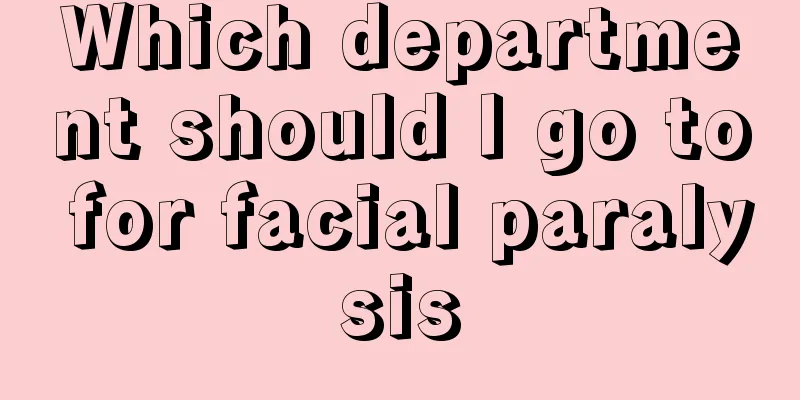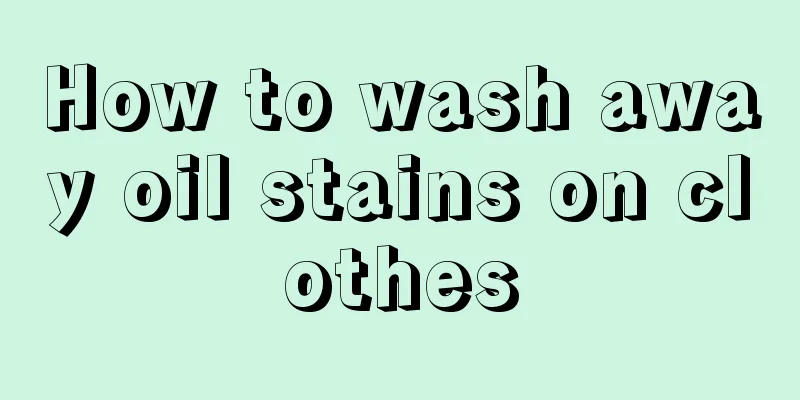Which department should I go to for facial paralysis

|
After facial paralysis occurs, patients should see the corresponding department according to their physical condition, so that they can recover faster. When facial paralysis occurs, everyone should receive treatment as soon as possible, and you must know that only after finding the correct department, the treatment and recovery will be faster after examination. Disease diagnosis Static inspection Stylomastoid : Check for pain in the stylomastoid process or in the temporal or facial area on one side. Forehead : Check whether the forehead skin wrinkles are the same, lighter or disappeared, and whether the outer sides of the eyebrows are symmetrical and drooping. Eyes : Check the size of the palpebral fissure, whether the two sides are symmetrical, smaller or larger, whether the upper eyelid is drooping, whether the lower eyelid is everted, whether the eyelid is twitching or swollen, whether the conjunctiva is congested or ulcerated, and whether there are symptoms of tearing, dryness, soreness, or swelling. Ear : Check for tinnitus, stuffy ears, and hearing loss. Cheeks : Check to see if the nasolabial folds become shallower, disappear, or deepen. Whether the cheeks are symmetrical, flat, thickened or twitchy. Does your face feel tight, stiff, numb or shrunken? Mouth : Check whether the corners of the mouth are symmetrical, drooping, upturned or twitching; whether the lips are swollen, and whether the philtrum is skewed. Tongue : Check for taste involvement. Motor examination Eyebrow lift exercise : Check the motor function of the frontal belly of the fronto-occipital muscle. Severely ill patients have a flat forehead, wrinkles generally disappear or become significantly lighter, and the outer sides of the eyebrows droop noticeably. Frowning : Check whether the corrugator muscles can move and whether the movement range of both eyebrows is consistent. Closing eyes : When closing your eyes, you should pay attention to whether the corner of the mouth on the affected side moves, whether the affected side can be closed tightly, and the degree of closure. Lifting the nose : Observe whether there are wrinkles on the nasalis depressor muscles and whether the movement range of the upper lips on both sides is the same. Show teeth : Pay attention to the range of movement of the corners of the mouth, whether the mouth cleft is deformed, and the number and height of the exposed upper and lower teeth. Pursing the lips : Pay attention to whether the distance from the corners of the mouth to the philtrum is the same, and whether the shape of the pursed lips is symmetrical. Cheek puffing : mainly checks the motor function of the orbicularis oris muscle. |
<<: What ointment should I use for black corners of mouth
>>: My right cheek hurts when I open my mouth
Recommend
It is easy to get angry in the summer. What should I do if I catch a cold once a week?
The temperature is very high and the climate is h...
How long does it take for appendicitis to heal
Appendicitis is a disease problem in which the ap...
I have no strength and my head feels dizzy
Sometimes people may find that they have no stren...
What is the reason for the throbbing of the philtrum?
There are many acupoints distributed on our body,...
How to remove blood stains from cotton cloth
In our daily life, we often encounter blood stain...
What are the symptoms of lung cancer that need attention? Don't ignore these 4 symptoms of lung cancer
Lung cancer is a relatively serious malignant tum...
What to do if there are a lot of blackheads on the nose
What we often call blackheads on the nose are act...
Can dried chili peppers be put in the refrigerator?
The so-called dried chili peppers are chili peppe...
How to make fruit popsicles
Popsicles are cold drinks made to cool off in the...
What does stage three cervical cancer mean?
After being diagnosed with stage III cervical can...
Should I use lotion or cream first?
There is no girl who doesn't love beauty. Mos...
What are the principles for the treatment of liver cancer? Grasp these principles in the treatment of liver cancer
Facts have proved that retreatment is the key to ...
How long can a diaper be kept after it is opened
For many parents, in order to take better care of...
How to treat foreign body in throat?
Throat diseases bring great pain to the patient&#...
What to do if my face becomes red and painful from welding
During the welding process, if the welders fail t...









